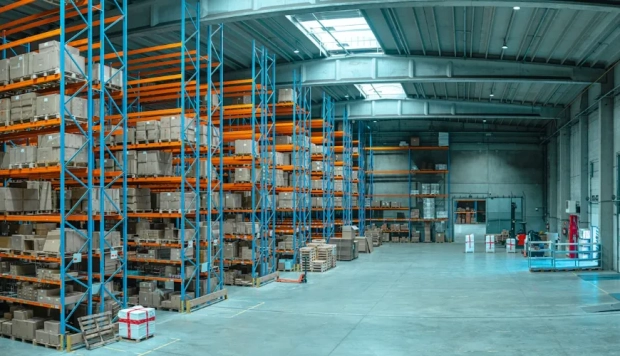Adapting Solutions to Match Organizational Needs and Goals

Organizations exist in a world where adaptation can make or break their success. The ability to pivot and adjust solutions to meet evolving needs is vital in driving both efficiency and growth. Companies are constantly striving to find strategies that align with their current objectives and anticipate future challenges.
This flexibility is not merely beneficial; it is important for survival in a competitive marketplace. We will explore different solutions that can be customized, with a focus on technologies like smart lockers, and discuss how organizations can benefit from strategic adaptation.
Understanding Organizational Needs
Identifying and understanding the specific needs of an organization serves as the foundation for adapting solutions effectively. An analysis of both internal and external environments can reveal critical insights into the existing processes and the challenges faced daily. This assessment often entails reviewing employee feedback, customer expectations, and market trends. A systematic approach encourages organizations to drill down into their operations.
Companies can pinpoint inefficiencies and resource gaps by utilizing data analytics. This data-driven mindset allows for more informed decisions, ultimately aligning tools and methodologies with organizational objectives. Alongside technology, the human factor should not be overlooked. Employee commitment to the changes plays a key role. If the workforce is not on board with new adaptations, integration of new solutions can falter.
Implementing Smart Lockers
With innovation shaping the landscape, smart lockers present a unique solution for organizations aiming to streamline operations. These automated systems offer secure storage for key items, making them ideal for various scenarios ranging from mail and package delivery to employee belongings. The team behind Yellowbox says that smart lockers enhance security and improve accessibility and convenience. Organizations utilizing smart lockers often find that the integration fosters productivity by eliminating time spent on manual processes.
Employees and supervisors can retrieve or store items quickly, minimizing disruptions during work hours. Smart lockers come equipped with various features such as remote management, tracking, and alerts, which allow management to provide seamless experiences for users. The customization aspects of smart lockers cater to different industries and needs, making them adaptable for both large corporate environments and smaller businesses. Their ability to be tailored with specialized access codes or integration with existing security systems enhances their functionality, appealing to a broad spectrum of organizational requirements.
The initial investment in smart locker technology can be recouped through improved operational efficiencies and reduced overhead costs in the long run. The user-friendly nature of modern smart lockers promotes a culture of independence among employees, allowing them to manage their items without relying on administrative support.
Embracing Flexibility Through Technology
The rapid pace of technological advancement necessitates an agile mindset among organizations. Tools like cloud computing, project management software, and automated systems have transformed traditional operational models, allowing for further customization in workflows.
This adaptability enables organizations to react promptly to changes and to anticipate the trajectory of their industries. Developing a culture that values flexibility is important for sustainable growth. Organizations that are open to innovative technologies tend to foster environments where employees feel empowered to propose new ideas and solutions.
Collaborative brainstorming sessions can lead to the development of creative adaptations that align with overarching goals, enhancing both productivity and morale. Organizations can establish themselves as innovative leaders in their industries by continuously monitoring and evaluating technological trends. Investing in the latest tools and ensuring employees are properly trained can create competitive advantages that are challenging for rivals to replicate.
Building Strong Communication Channels
Clear communication within an organization acts as the cornerstone of effective adaptation. When employees understand organizational goals and the rationale behind strategic shifts, they are more likely to embrace change. Utilizing multiple communication channels ensures that information is disseminated efficiently.
Leadership plays a significant role in fostering an open dialogue regarding changes and adaptations. Leaders should regularly engage with their teams, actively seeking input on operational adjustments. This participatory approach boosts morale and promotes ownership among employees, ensuring that adaptations are embraced rather than resisted.
An incentivized feedback mechanism can be beneficial. Organizations foster a collaborative culture by acknowledging employee contributions during strategic changes or adaptations. This leads to improved engagement and aligns everyone towards common objectives.
Evaluating Success Metrics
Organizations must establish clear success metrics for evaluating the effectiveness of their adaptations. Tracking key performance indicators (KPIs) allows leaders to assess whether the changes implemented are achieving desired results. Metrics may include employee productivity levels, engagement scores, customer satisfaction ratings, and financial performance indicators. Regular evaluations help to identify which adaptations are working and which may require adjustments.
This ongoing assessment creates a cycle of continuous improvement, ensuring that organizations remain aligned with their goals. If certain strategies prove ineffective, a willingness to revisit and modify approaches is critical. It is equally important to celebrate successes, no matter how small. Recognizing achievements reinforces the benefits of adaptability, encouraging ongoing alignment with strategic goals. Solutions like Mirro serve as performance management software that help teams translate these success metrics into measurable outcomes.
Looking Ahead: Future-Ready Solutions
As organizations navigate an increasingly complex business environment, the need for future-ready solutions becomes paramount. Preparing for market uncertainties involves investigating trends and emerging technologies that could play a role in shaping operational success.
Organizations should adopt a proactive strategy, continuously scanning the horizon for new opportunities. Investments in research and development can significantly contribute to identifying solutions that resonate with company goals. Collaborations with other organizations or start-ups focusing on innovation can provide fresh perspectives and technologies that adapt to changing needs. Incorporating sustainable practices can enhance an organization's reputation while aligning with evolving consumer preferences.
As sustainability becomes a focal point for many customers, organizations that adopt these principles are more likely to see continued engagement and loyalty. Establishing a strategic roadmap to integrate updated solutions positions organizations favorably amidst changing market dynamics.
In addressing organizational needs through adaptation and innovative solutions, companies secure a pathway to success and resilience. The integration of smart technologies and maintaining open communication fosters a culture of engagement that supports both employee satisfaction and organizational growth.



